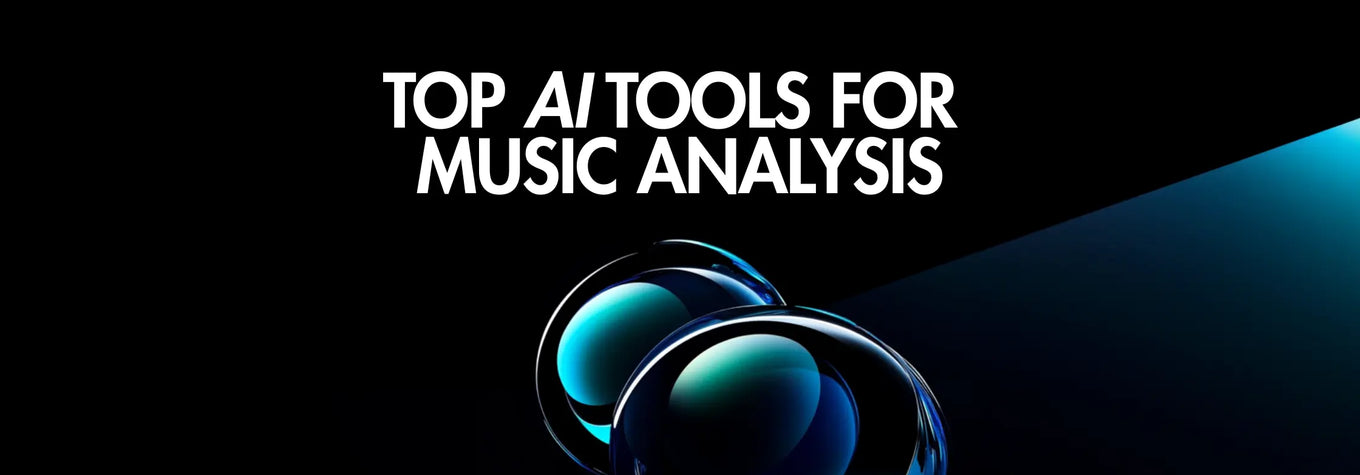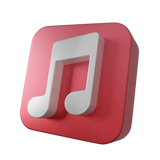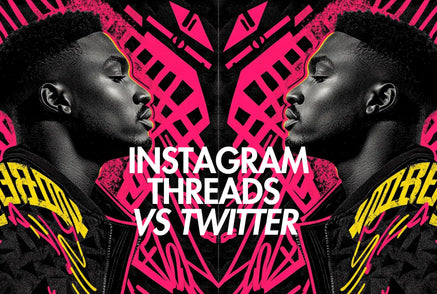Best AI Tools for Music Analysis in 2025
AI brings new solutions to the music industry, expanding opportunities for musicians, producers, composers, and other specialists. Tools are supposed to collect data, analyze trends, simplify the workflow, and help musicians understand where they are going. Artificial intelligence won't replace content creation, but it will reduce the number of repeatable tasks, helping you switch to something more important. If going beyond default purposes, AI music tools will cover the following tasks:
-
Generating pitches for playlist pitching.
-
Identify the BPM of the track to match other songs.
-
Provide an in-depth report on the tempo, rhythm, mood, genre, and other details.
The role of AI in music creation and distribution rises constantly, and the more you are into this business, the more you need to optimize your workflow. Each tool represents a different side of AI music analysis, and our article is aimed at showing how these tools will work.
Do Free AI Tools Exist for Musicians in 2025?
In 2025, musicians will have access to tools made specifically for music analysis as well as universal tools that can help musicians with general tasks.
|
Tool |
Model |
Unique Features |
Benefits for Artists |
How AI Helps Artists |
|
BuzzSumo |
Freemium |
Content discovery, social shares tracking, influencer search |
Discover viral music-related content, analyze competitor visibility, and plan content calendars |
AI detects trending content patterns, sentiment analysis, and relevance ranking |
|
Claude.ai |
Free |
Handles large documents and CSVs, with longer memory than ChatGPT |
Analyze large listener data exports (Spotify, YouTube), summarize trends, and generate marketing ideas |
Natural language data analysis, summarization, and strategy generation from raw datasets |
|
Viberate |
Freemium |
Visual dashboards for streaming, social & radio data, genre-specific market maps |
Monitor artist growth, compare audience data, and find target markets |
AI recommends genre trends, highlights emerging markets, and flags notable changes in stats |
|
Chartmetric |
Freemium |
Playlist tracking, fan engagement scoring, and global chart visibility |
Track playlist adds, benchmark against similar artists, plan release windows based on AI trends |
AI identifies growth trends, flags playlist influence, and scores artist virality over time |
|
Soundcharts |
Paid (Demo) |
Real-time radio tracking, DSP/social media aggregation, and alerts |
Monitoring track airplay, audience reach, and track media coverage across regions |
AI triggers real-time alerts and identifies the correlation between AirPlay and social spikes |
|
LANDR |
Paid |
Music mastering and distribution. Courses for beginners, access to a large community. |
Processing multiple tasks at once, giving free previews, and providing options for collaboration. |
AI provides better analytics for artists, giving insights on promotion and marketing. |
This table shows how different tools help artists cover various operations within a short period of time. Still, what's more important is how you use AI tools, measuring weekly, monthly, and annual stats. Properly integrated artificial intelligence technologies make a solid impact, delivering valuable insights right when you need them.
Spotify for Artists — Useful AI Tool Right Where You Need It
Spotify for Artists stands out among other AI tools, as it does not require additional integration. You can access it directly from your profile, getting access to the toolset. Spotify for Artists presents the information about your audience, including
-
Audience breakdown (active listeners, unintentional music streamers, newcomers) is available with Segments.
-
Notice release engagement and adapt strategies in the future. Available in the listener conversion metric.
-
Explore your fan community worldwide with Spotify Fan Study to develop a better fan base and build the audience you want.
At this point, Spotify for Artists will only give you the numbers, not the structure. You have to identify patterns yourself, using separation tools. When you receive your reports, extract them to ChatGPT or Claude.AI and set your goals. Whether it's about structurization, summarization, pattern analysis, or other operations, the tool will do the job.
To get the needed result, set a clear request. Say it like, "Can you please deconstruct raw data into themed clusters (playlist vs. organic growth, etc.)?" You can ask to make it in the form of a table or a list with clear point names.
LANDR: Master and Distribute Your Music Effectively

LANDR is an AI-powered program popular not only for artists but for producers and record labels as well. Users need a subscription to start using the available capabilities. You have three levels of access, and if you select the most expensive, you’ll receive:
-
Unlimited MP3 masters.
-
WAV Masters.
-
LANDR Mastering Plugin.
-
Unlimited distribution.
-
Royalty-free sample credits.
-
A bundle of plugins for LANDR.
-
Additional bonuses from partners (more plugins, music promotion courses, etc.).
A major advantage of LANDR is in unlimited distribution capabilities: you can easily share your tracks on more than 150 platforms. Vocal processors and AI mastering plugins allow you to reshape your tracks and bring them to the desired quality before sharing.
What’s also fascinating is that LANDR opens the doors to a bigger music community. You are free to join dozens of video chats and community channels, and access the database of industry professionals. Ask for advice and share personal experience instead, making the music creation more effective. If you’re a beginner seeking knowledge, you can still find something interesting for you. LANDR gives access to various music courses, helping individuals learn about music promotion, have a better understanding of music production, and understand other essential things.
ChatGPT for Music Analysis: Underrated Player or a Breakthrough?
ChatGPT wasn't specifically developed for music analysis, but it makes a big difference in terms of data processing, clustering, context interpretation, and summarization. The key advantage of this tool is its ability to process large amounts of information, extract specific stats, and identify patterns. What may take hours for users takes seconds for ChatGPT, and this is where the usage of AI for music production becomes advantageous.
One of the recent innovations, GPT for Docs, supports ChatGPT, Gemini, Perplexity, and other AI tools for Google Sheets and Google Docs. With that, report delivery becomes seamless.
Why does it remain underrated in the music segment?
It lacks direct integration with music streaming platforms. Direct integration would allow musicians to develop pitches, create profile descriptions, suggest posting schedules, and so on. Those who work with Spotify or SoundCloud would've taken advantage of such integration. Moreover, ChatGPT may not be so powerful itself, as it makes more impact combined with Chartmetric, BuzzSumo, and similar tools.
The Successful Use of AI: A Case Study
An independent electronic artist, John Sherman, used Chartmetric to track playlist performance and audience spikes. After noticing a gradual increase in streams from Germany, they exported the raw listener data and fed it into ChatGPT. The AI helped them segment the audience, identify organic versus playlist-driven growth, and craft a highly personalized pitch for playlist editors.
As a result, the artist was featured in a Spotify Editorial playlist just three weeks after using this combined AI strategy. Their monthly listeners grew by 210%, and the track reached over 100,000 streams in a month.
Combining Zapier and AI With Platforms in One Dashboard
Gathering data across all active platforms, including TikTok, Instagram, YouTube, and others, takes hours and lots of effort. The combination of the Zapier tool and AI-powered programs resolves this problem. Zapier ensures connection between the platforms you're present at, gathering data on key metrics and sending them to Google Sheets or other similar tools you prefer. Next, share the document with ChatGPT and ask it to analyze metrics, providing a summary. You can ask for an outline of the most impactful hashtags across TikTok, Instagram, and YouTube, the peak subscriber activity, etc. Then, ask the AI to turn metrics into solutions by doing the following:
-
Bringing suggestions on when to post new content.
-
Selecting the best tags to add to descriptions.
-
Identifying the most viral format.
Content creators develop personal approaches to use the Zapier-AI-Docs combo for performance improvement. It may take a while before you get yours, but it will pay off.
What Are the Best AI Music Production Tools in 2025?
The AI trend is changing rapidly as the music production process gets more automated and AI-related. AI analyzers are engaged in almost every operation, saving time and giving more options for development. You don't have to use all the tools at once, but you should choose the most effective programs for your workflow. The tools presented in our top cover different roles, from music discovery to trends research. They also enhance promotion efforts by suggesting a better release strategy. You can use it in combination with paid music promotion to achieve better results, understanding the patterns and identifying peak activities of your listeners.
The AI matters in terms of music analysis, and as soon as you master Music AI tools, you'll surpass competitors in your genre.
How can indie artists analyze Spotify data without paying?
Which platforms help analyze music audience data for free?
Is there a tool to generate music?
How to take advantage of AI for music promotion?
What are the metrics musicians should track weekly in 2025?
Can creators earn from AI-generated music?
How to use ChatGPT for music tracking?

























James Thornton
Some of these names are new to me. Bookmarking this for later.
Some of these names are new to me. Bookmarking this for later.
Jonas Richter
Thanks for sharing this. Some of these tools sound like they could save a lot of time in production.
Thanks for sharing this. Some of these tools sound like they could save a lot of time in production.